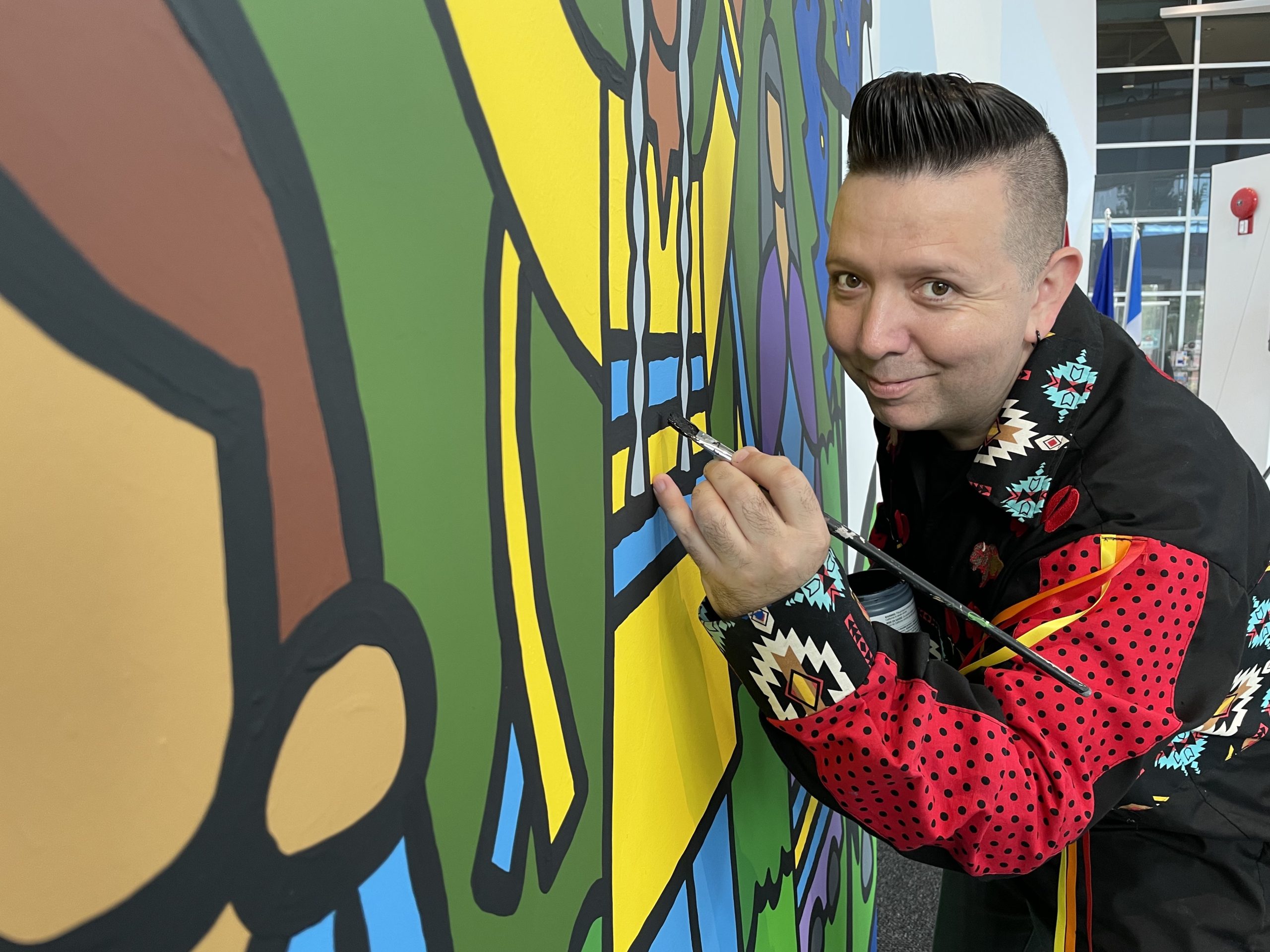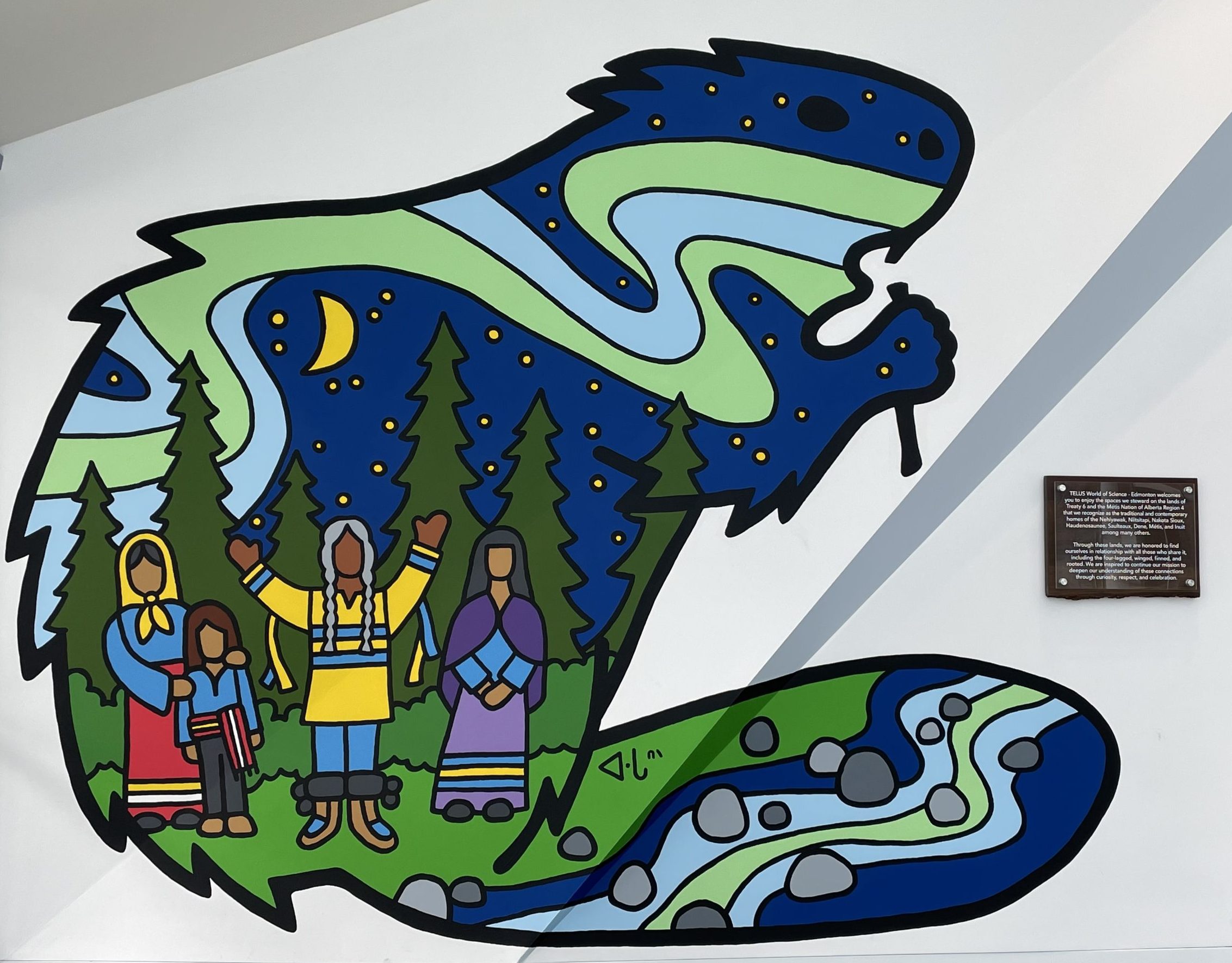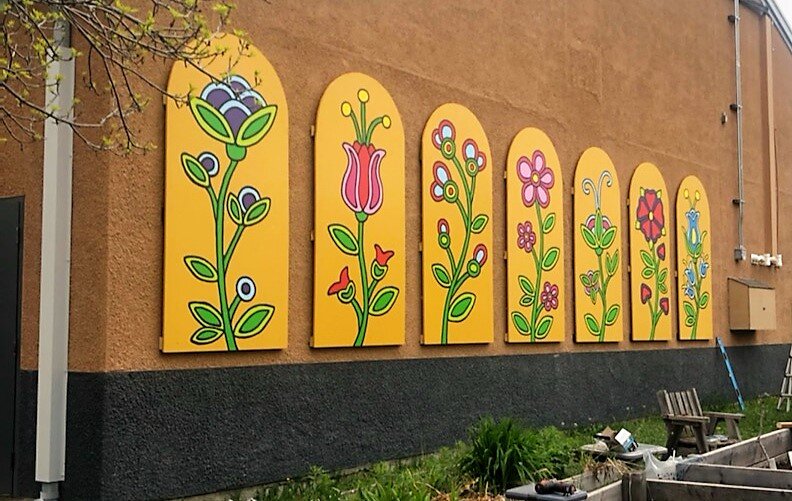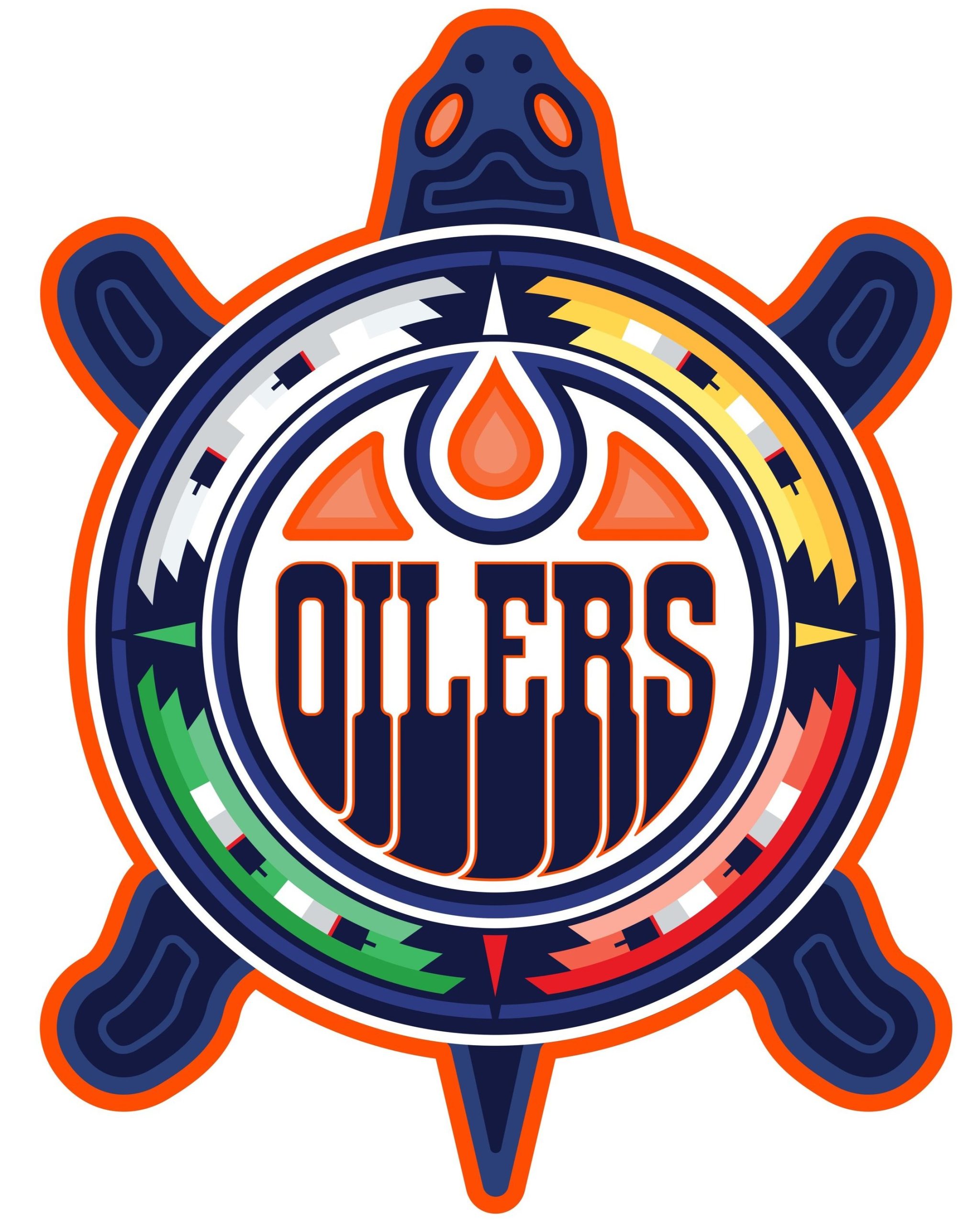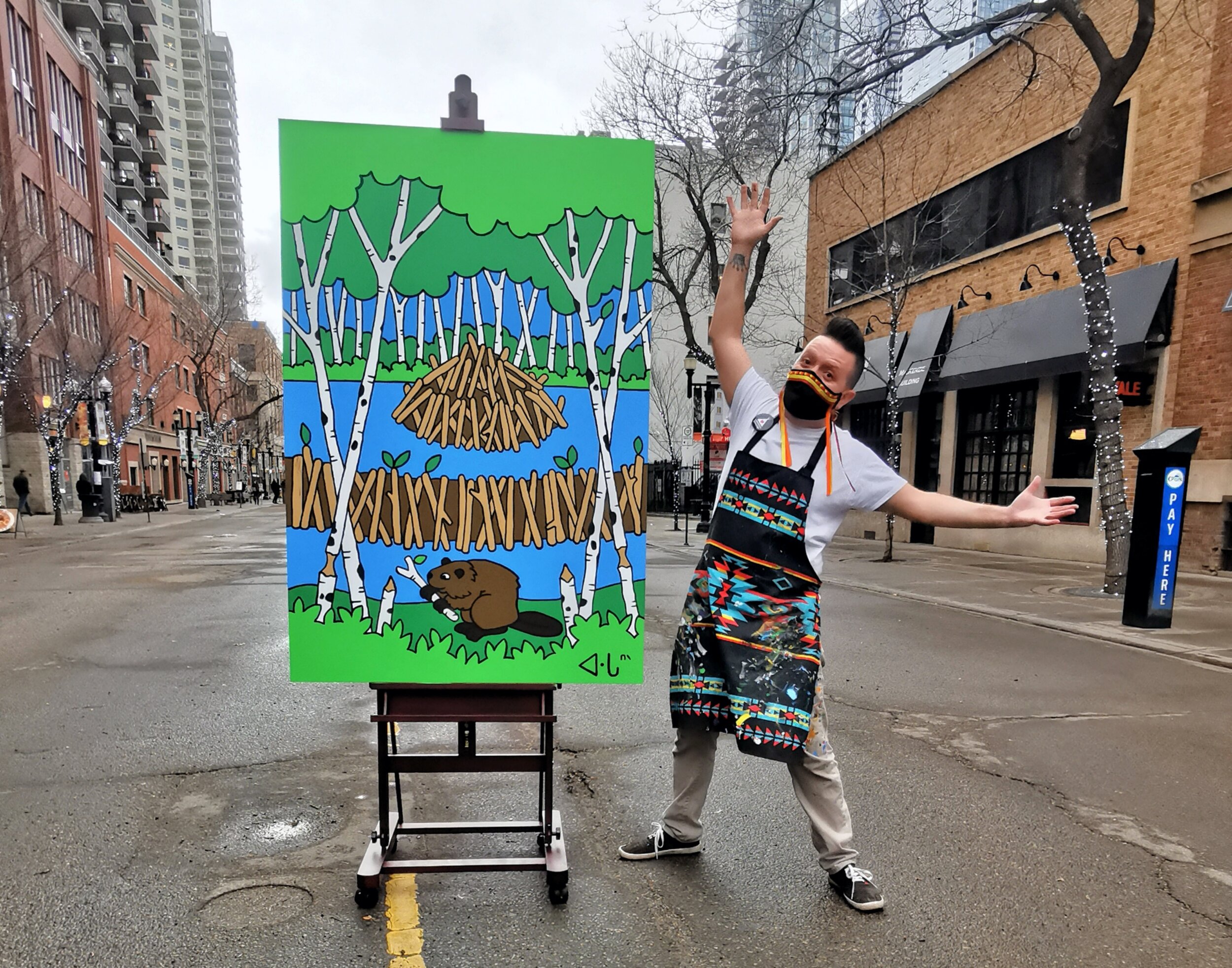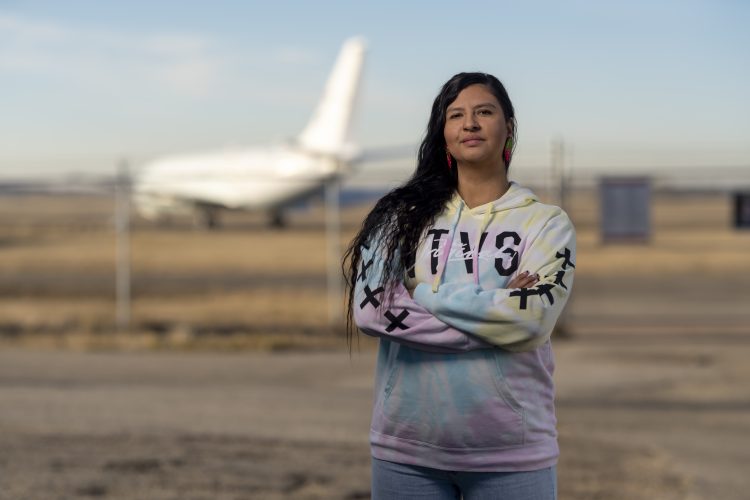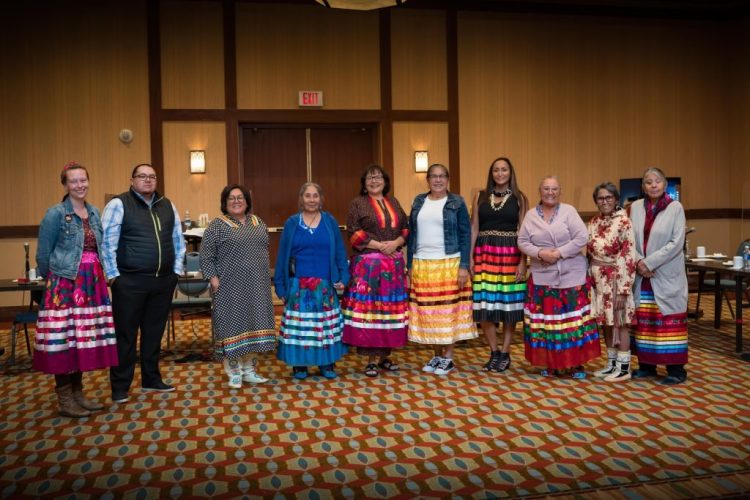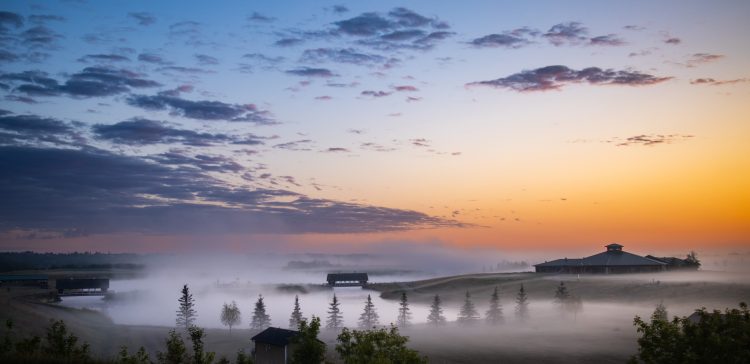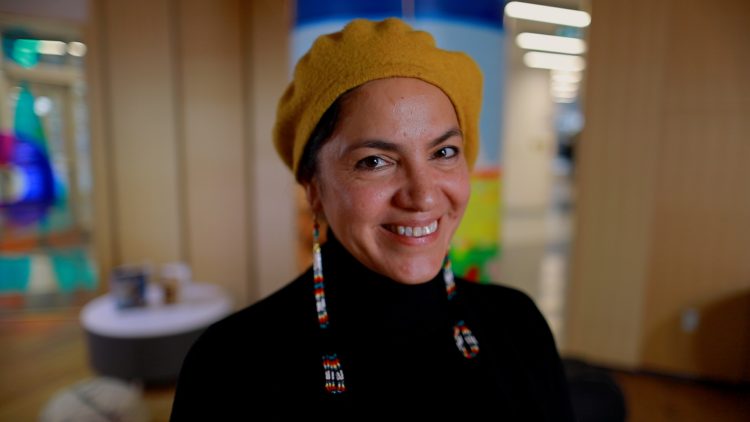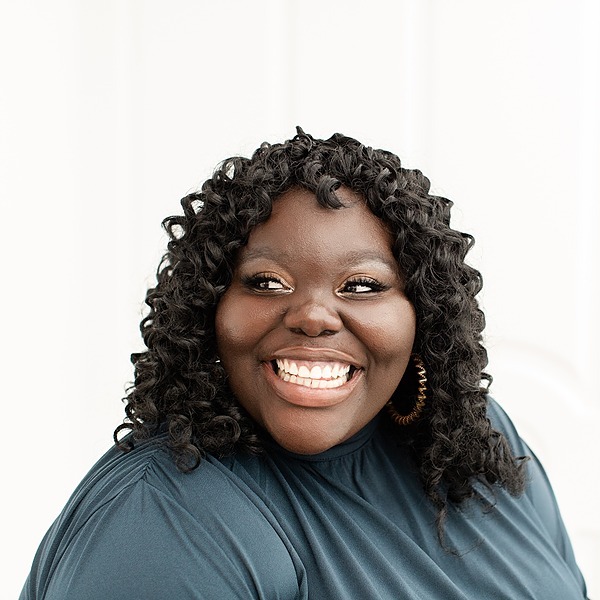“That’s the best painting I’ve ever seen.”
“Your colours are beautiful.”
“Is it finished?”
Cree artist Lance Cardinal smiles as he’s surrounded by a gaggle of inquisitive elementary students. He’s working on a mural of a beaver at the TELUS World of Science in Edmonton, which is located on Treaty Six Territory, the traditional land of diverse Indigenous Peoples.
“Do you know what animal that is?” Cardinal asks the students.
“A lion?” replies one girl. “A beaver!” says another. “You’re right,” Cardinal beams. “Do you know how to say beaver in Cree?” The children shake their heads. “Amisk,” he says. “Amisk,” they repeat.
Cardinal lives for these moments, getting to celebrate and share his Indigenous culture with others in Edmonton and Alberta.
“We had [the Truth and Reconciliation Commission],” he says. “Now it’s a new type of reconciliation. It’s led by Indigenous and non-Indigenous people and that’s what’s exciting. Now we are one-on-one.”

